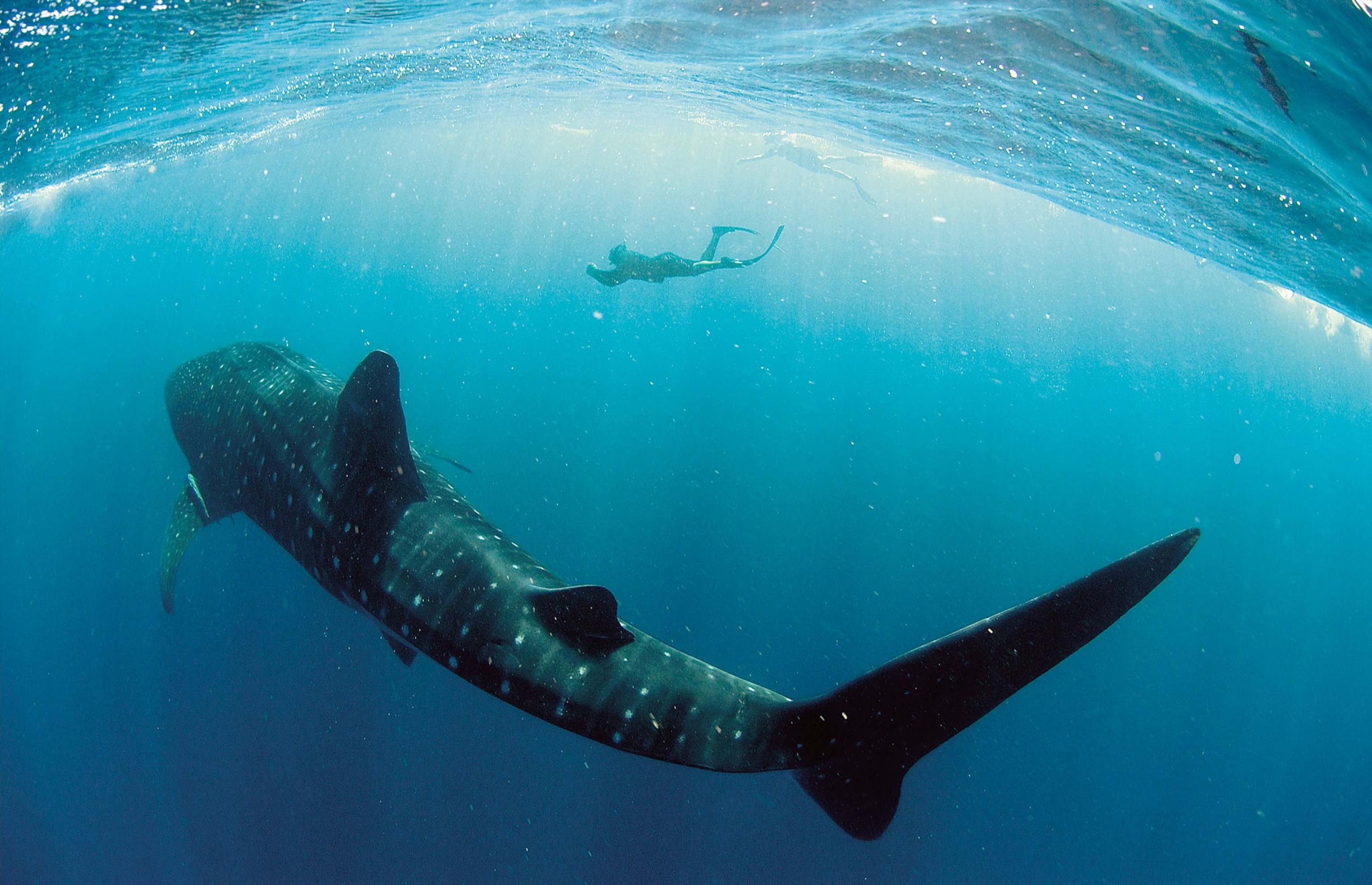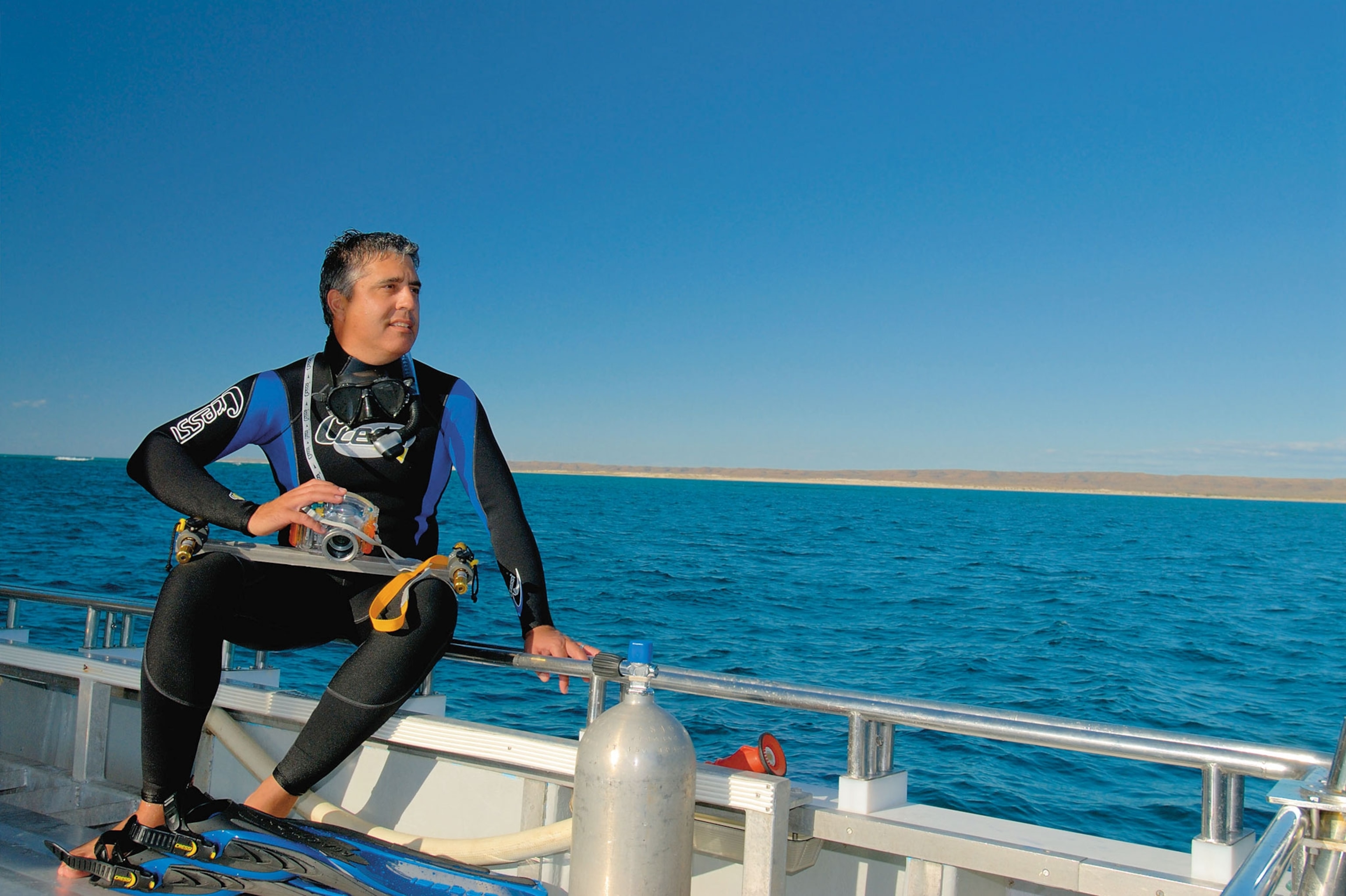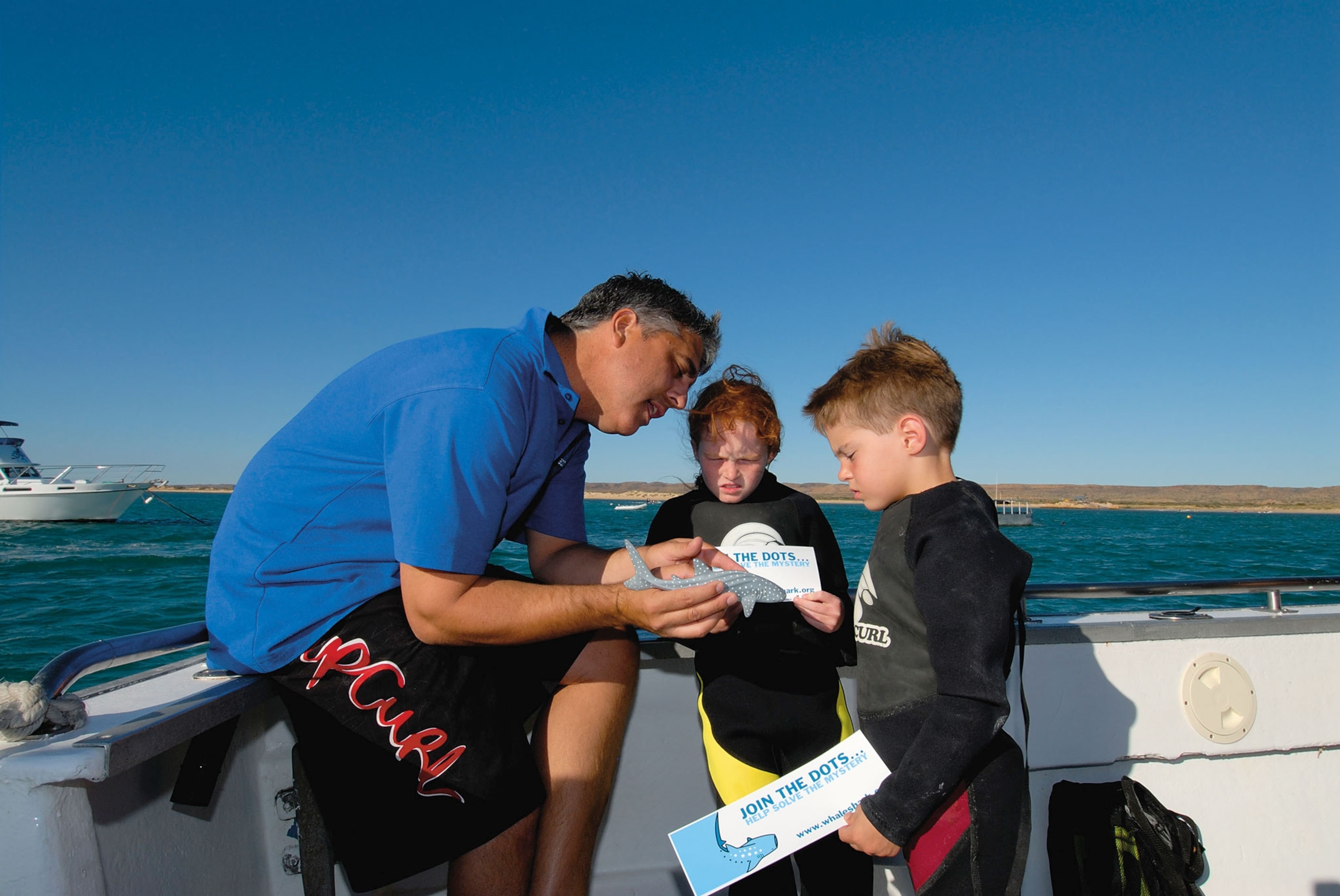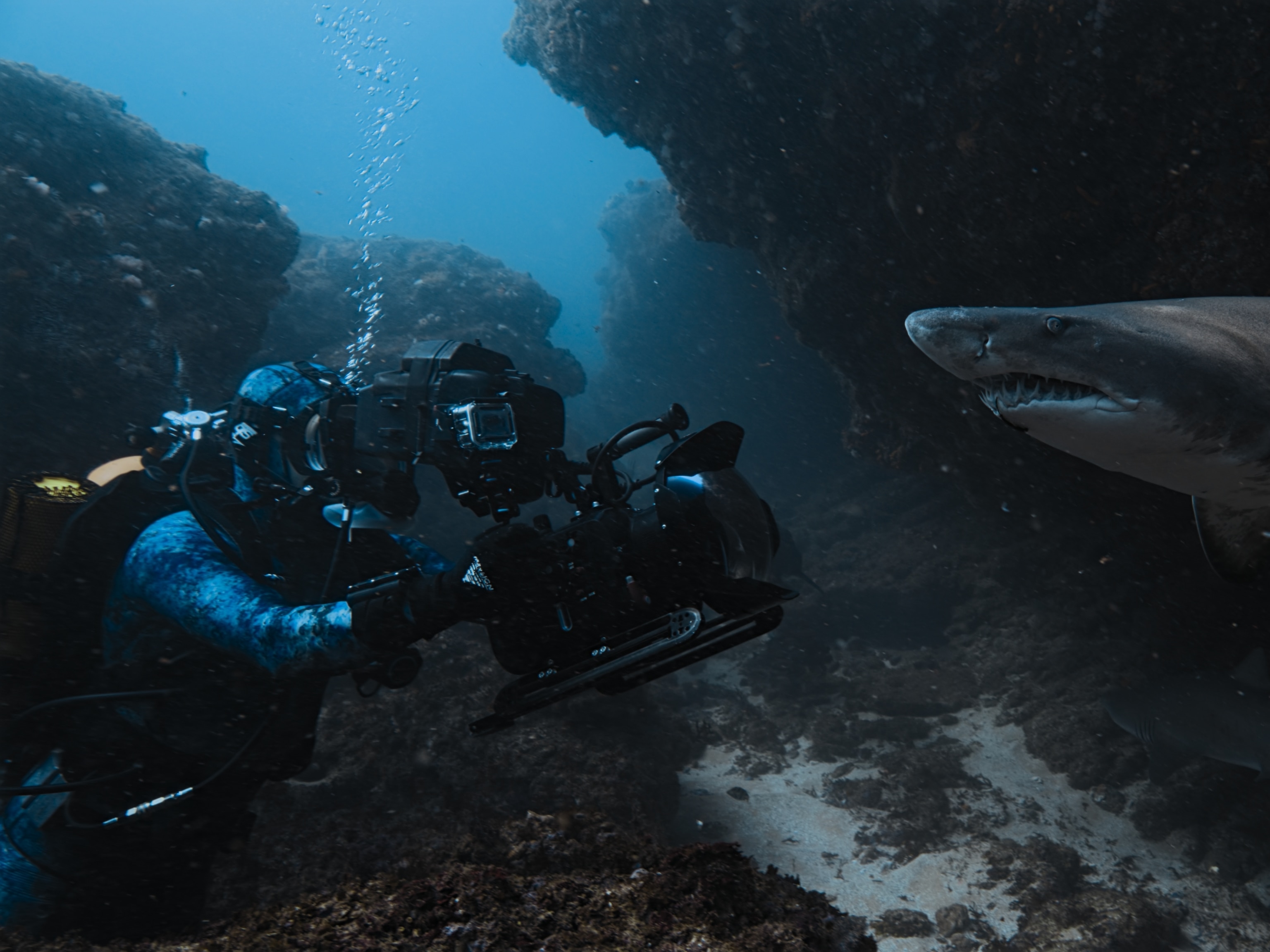
Tracking the Sea's Gentle Giants
Citizen scientists and star-mapping technology help marine biologist Brad Norman study the elusive whale shark.
Surprisingly little is known about the biggest fish in the sea.
That’s why conservation biologist Brad Norman, one of the world's foremost whale shark experts, is on a mission to recruit thousands of schoolkids, tourists, and divers to photograph and report encounters with the docile giants.
When spotted, the whale shark is hard to miss. It can grow to a bus-size 40 feet, filter-feed plankton through a nearly five-foot-wide mouth, and weigh 20 tons or more. But despite its status as an endangered species, overall whale shark numbers are as murky as their backstory.

Initially discovered after an 1828 harpooning off South Africa's coast, there were just 320 cumulative sightings over the next 160 years, before research began intensifying.
“We still don’t know where they meet to mate or why they gather in some places or much about critical habitats,” Norman says. “And they're difficult to track because they can stay down deep for months at a time. So there's still a lot of mystery surrounding them.”
Based on assessments of commercial fishing, the shark-fin trade, and boat strikes, Norman says their global population may have declined over 50 percent the past 75 years.

Norman, a Rolex Laureate and National Geographic emerging explorer, began expanding whale shark research exponentially in the 1990s. His marine research organization, ECOCEAN, pioneered the photo identification of whale sharks. At present, more than 7,000 whale sharks have been recorded, primarily through 60,000 photographs and 36,000 “encounter reports” submitted by citizen scientists and shark sleuths on the online photo identification database Wildbook for Whale Sharks.
Whale sharks have a unique pattern of white spots near their gills and pectoral fins, much like fingerprints. Pattern-recognition algorithms adapted from those used by NASA to map stars allow a swelling collection of photos from 54 countries to serve as visual tags for identifying individuals, as well as aid researchers in piecing together migration patterns and territory.
“[Having] thousands of citizen scientists around the world really generates information about these fish and a lot of public interest that helps conservation of the species,'' Norman says. "And the beauty of this is anyone can assist in whale shark research."
Norman also places temporary cameras on whale shark fins, providing a fish-eye view of their slow, graceful movements and interactions with humans. During more than two decades of research off Western Australia's Ningaloo Reef, he’s had several encounters with Zorro—nicknamed for the Z-shaped scar on the upper edge of his tail—and Stumpy, another mature whale shark with a stump-shaped fin.
“Swimming with them is like seeing old friends,’’ Norman says. "Knowing they've matured and keep coming back gives me a warm feeling."
Norman encourages the next generation of whale shark researchers through promotions such as 2015's Race Around the World, which placed satellite tags on a dozen whale sharks and encouraged schoolkids to track them. He plans to engage more students in the study of whale sharks and help raise global awareness in 2017. (See whaleshark.org.au for more information).
"We're still in the early days when it comes to understanding the whale shark's history and behavior,'' Norman says. "We're lucky more and more people are getting to see them and collaborating with us to open the book on them."





